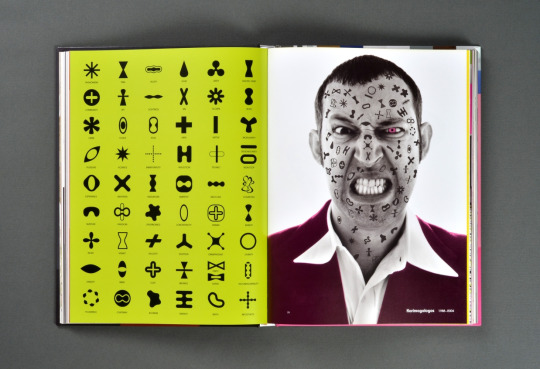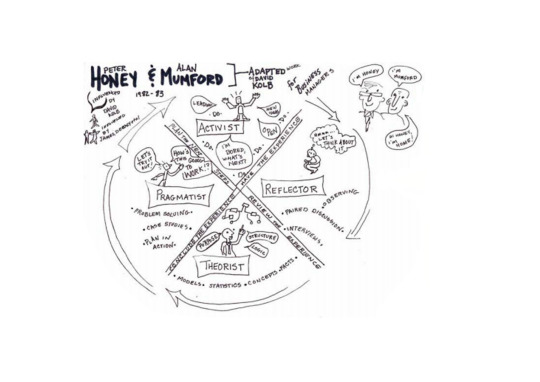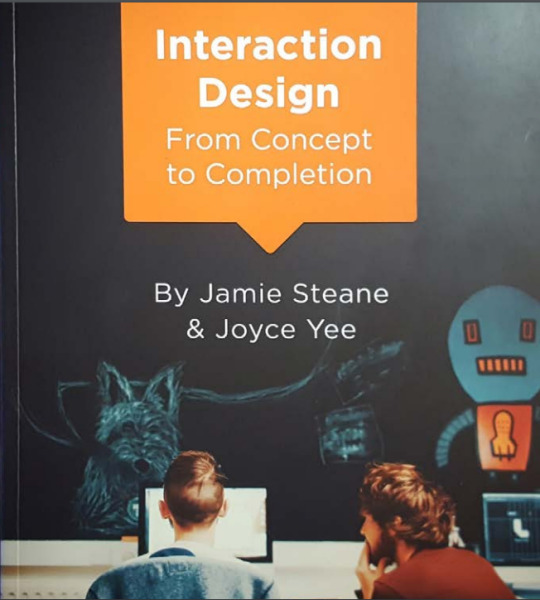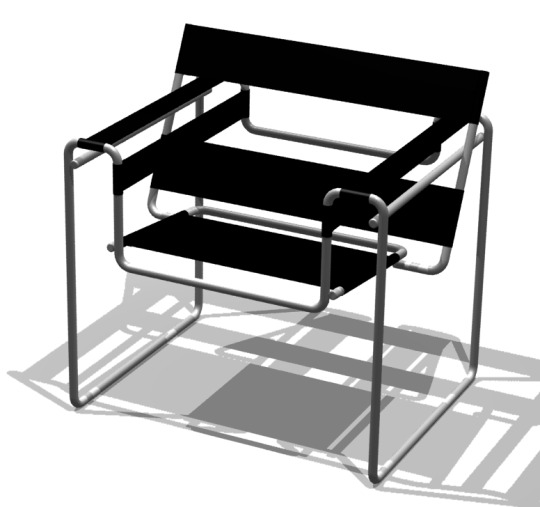Text
Design Approaches
Co-Design
Co-Design is a practice with Scandinavian roots, often having ‘nicknames’ such as Co-Operative Design, Co-Creation, and the aforementioned ‘Co-Design’, but what is this Co-Design practice?, well according to Sanders & Stappers, 2014:5-14 it ‘refers to collaborative design and integration between the design and the user who may be a non-designer’ basically it's a practice that involves the client in the designing processes rather than the designer and the client being segregated, i.e. instead of the designer converting the clients ideas into designs, it forces the clients to come up with the design (with the help of the designer), which often results in a design that functions as the client wants it to.

This Co-Design practise is often achieved through various methods, such as games, role-play and enactments, storytelling, workshops, etc which sounds ‘expensive’ however this isn’t the case as these methods are often created in low-fidelity, such as cardboard/ general crafts, which makes you wonder why doesn’t everyone follow this practice, as it increases the likelihood of a successful design for the client, encourages innovations, as multiple ideas are clashing with each other, from designers, and non-designers often ending up with innovations, it fosters shared ownership, meaning everyone feels involved from the stakeholders to the designers, resulting in a stronger relationship (https://www.netsolutions.com/insights/why-collaborative-design-to-build-products/) which makes it sound like a incredible practise for a design firm to have...

However, although it does have its positives, it’s not without any negatives, such as the extent of the innovations, you see this practise of Co-Design it’s heavily reliant on the client which sounds senseless, but when you have that wall between a designer and the client it creates a area of reality, in which as designer can be as innovative as they want within the boundaries in design where they can relay that information to the client, but in Co-Design it ‘blurs’ this boundary, which results in the client either having crazy idea that can’t be accomplished, or a simple subdued idea, which can be accomplished, but isn’t innovative. Another negative is that employing the Co-Design practise may result in serving a niche market (this mainly aimed at larger companies), as only a select few are involved in the Co-Design process, which may result in only those small few involved being interested, obviously this doesn’t detract from the client being pleased with the end product, but the product itself might not successful i.e. let’s say you’re the head of a large soda brand that has standard bottle shape but you, and your top employees want to change that bottle from a standard bottle shape to a sphere, and yous love it however this may cause some major issues down the line, such as transportation, cost etc which results in a unsuccessful product.


Obviously you can take steps to avoid these issues, such as being careful of customer selection, having a mix of customers in large quantities, good timing, etc, overall Co-Design is an effective way in creating a product the client/customer(s) like, when done correctly in the right situations.
(https://joycediscovers.wordpress.com/2012/01/21/negative-side-effects-of-co-creation/)
Design Cultures
What is design culture?Well design culture is a collection of approaches, beliefs, ideas, etc. based around design, especially around what it means to be a designer, why is it important, and why is it changing. Design culture arguably began back in 1851 with the great expedition, where participants from around the world came together as the first ‘design culture', but one of the first impacts on design culture as a wholes was Jonathan Ives’ IPOD design, which not only impacted the design world but us, the consumers as well, as it was the first time portable music was made simple, rather than carrying CDs, or cassette tapes, you instead had all of your music in one small easy to use audio player, which made us think with what more can we do with design in relation to the clients, and our design conscious.

(iPod -Jonathan Ives)
What I mean by design conscious, is that what are the things we use as designers to get our ideas across, and what are the consequences of doing so, take for example the Alessi lemon juicer, which is the embodiment of form follows function, as it looks aesthetically pleasing, whilst looking deceptively intuitive, i.e. when you put to practice it fails quiet spectacularly, however the opposite is also true in design, such as the Bauhaus Wassily chair, which follows function over form, i.e. the aesthetic of the chair, visually indicates what it’s meant to be, and what it’s function is.

(Alessi lemon juicer - Philippe Starck)
However creating a design such as the Wassily chair requires a person to do either extensive research in chair design or specialises in product design (or other similar fields), but the design for the Alessi lemon juicer was designed by Philippe Stark, who has designed a plethora of designs outside of product design, i.e. a ‘polymath designer', someone who isn’t ‘tied down’ to specific field, of course one can have a specialisation in design, but you don’t necessarily have to ‘stuck’ in that field.
Take for example Karim Rashid, he’s a industrial designer that has design interiors, products, and has even dabbled in graphic design too, which does blur what it means to be a designer, back in the late 80s/early 90s, designers were often people who would design virtually anything, i.e. the polymath designers of today -however that way of thinking did fade over the years and many people today would rather specialise in a design discipline than going the jack of all trades path, this probably due a simple question, what is a good design?, is it something that functions, or is it something that looks aesthetically pleasing either way both these outcomes are correct, as to me ‘design cultures’ is just a means in which you yourself as a designer can be innovative through a group of like minded people, there is no right or wrong way in design, only positive and negative outcomes.

(nHow Hotel lobby -Karin Rashid)

(https://duuplex.com/work/karim-rashid-evolution/)
Design Thinking
Design thinking is how designers communicate to their clients or other designers, this practise ensures that the ideas conveyed don't get convoluted.
So how does Design Thinking work, well to get started you have to find out what type of learner you are, for this we’ll be using Peter Honey and Alan Mumford’s categories of learners (adapted from David Kolb’s categories). The first category is the ‘Activist’, these are people who learn via using activities, diving head first -these are the type of people like to explorer in design, they have a open minded approach to learning, and love any challenges throw at them, to say it bluntly they are the Leaders in the group, often brainstorming new ideas, or solving problems, and partakes in group discussions, however they tend to dive in head first too quickly, and can miss out certain bits of information.
The next type of learner is the ‘Reflector’. This type of person learns from observation, often sitting on the sidelines taking everything into account (e.g. information given, the discussions about the information, how certain people think, etc) before coming up with a conclusion, typically the cautious one. They’re similar to the Theorist but they’re not as rigid, as in they don’t follow a straight path via the information given, instead they’re more flexible as they use the information given, and bend it in order to come up with solutions everyone agrees with by looking at different/ through perspectives. They’re typically the person that tries to keep the group on track without getting in their way.

Which takes us to our next type of learner of the group, the ‘Theorist’ they are people who learn through models, concepts, and facts, as the name suggests they use these models concepts and facts to theorise, and internalise every ounce of information at time often as seen as the perfectionist when it comes to information. They are the questionnaires in the group, often asking questions based around the design, such as how does the design correlate with this and that. They’re often detached from the group, taking on an analytical view of the information given, seeing where this or that information fits via applying theories, creating structures where the information makes sense

.
The final type of learner is the ‘Pragmatist’, these are the ‘mad scientists’ they learn from experimentation; coming up with ideas, and then putting these ideas into practise to see if they work, in a way they’re the living embodiment of ‘practise makes perfect’. As spontaneous as they are, they’re typically laid back practical people and often come up with new but practical solutions to problems when faced with a task.

So after identifying what type of learner you are, what comes next, well next part is understanding when each learner comes into play when solving a task, we can do this by using Peter Honey and Alan Mumford’s learning cycle(adapted from David Kolb), first comes the Activist, they’ll typically give the group the basic information, and a quick overview on what the group has to accomplish, after that the Reflector comes into play, this is where the information given is ‘funneled’ into something more detailed, by observing and thinking carefully about what information is necessary and what isn’t, by having small discussions with individuals, and taking on different perspectives, after the information is refined, the Theorists comes to play, this is where he’ll compile all the information given into a structure so that there’s a plan in place/checklist to follow. After this the Pragmatist creates ideas in which to execute the checklist, basically he creates a checklist that follows the task given and whilst using practical but innovative ideas to accomplish them.

Thinking Differently about Design
In this category we’ll be investigating what design is, and what are the different perspectives people have on design, and what design is today. So let’s begin.
What is design?, is it a drawing?, an idea?, well the answer is none, design is nothing but a tool used to form materials -physical, or digital (physical -stone, plastic, paper, etc, digital -3d models that simulate reality), of course design is a useful tool, however design doesn’t solve problems in the real world, but materials do, much like how air by itself doesn’t do much, unless the human inhales and uses that air to function and create something useful, the reality of is that design is USELESS without materials… this perspective seems very anti-design, but this perspective was viewed from a scientific ‘designer’ (Raymond Oliver), someone who has graduated in chemical engineering, with a PhD in chemical physics, and has spent 30 years in ICI creating bio-materials; as designers we find this perspective difficult to swallow as this perspective, is metaphorically taking a dump on our career choices and/or passion, however this potentially bias perspective on design does come with a legitimately good thought experiment.
Oliver sees design as THE ENEMY of a sustainable environment, which may sound over exaggerated however when you do think about it there is a truth, take for example plastic packaging, why do we use it in the way that we do?, it’s a material that has virtually infinite lifespan and is incredibly strong and yet we use it in such a careless, and inefficient way, only in recent times have we have actively try to find a sustainable ways to package our goods, but not out of the spirit of design, but out of necessity, even then we’re relying on materials, so where does design really fit?, well according to Oliver it should come between the ‘vision’ (idea), and material science, acting like a bridge, an example of this is a pigment Oliver and his team created which would detect pathogens by changing colour (material), this pigment was then used in hospital workers’ garments, so they know when to change and wash their uniforms (design acting like a bridge).
The Future of Fashion
To understand the future of fashion we first have to understand fashion as an industry. ‘The global fashion industry generates 2.5T$ of turnover, and employs 60M people worldwide, making the 7th largest global economic sector’, which basically means fashion is much larger than incorporating electronics in dresses, or about wearing our expressions on our sleeves, instead it’s more about how the piece of fashion makes the user feel, whilst ‘being aware and reflecting the modern world’, this can be seen in today’s fashion as in today’s society has begun to get more technologically advanced e.g.microscopic circuitry, flexible OLED screens, high capacity batteries with a small, lightweight form factor, etc these advancements have started to leak into fashion, take for example the E-Ink dress that was unveiled in Japan’s Display Week 2017; it’s a dress that automatically changes colour and style on the fly (albeit it doesn’t change the silhouette), or the aforementioned hospital uniforms that change colour in response to pathogens.

(E-Ink dress -before...)

(After)
The fashion of today takes inspiration, and the advantage of the NOW, but for that to happen you must hypocritically look as the past understand the now, because without, there can but no ‘NOW’, and fashion has always been like that, a tug of war between the past’s norms and values of society and the now, trying to change and evolve those norms and values, take for example Victorian garments, they represent the ‘NOW’ of Victorian times however they looked at the ‘Age of Enlightenment’ as their inspiration, which the ‘Age of Enlightenment’ took inspiration from the Renaissance, and so on, so in summary the fashion of the future is inspired by the past, created in the now, in order to become the precursor of the future.
Environment Under Stress
As this category indicates, our environment is under stress, but how is this the case?, well that is due to us, humanity, our hunger for resources, land, and technology is eradicating species and disrupting the balance of nature on Earth (climate change -warming oceans), so much so that we’re entering a new geological period: The Anthropocene.
‘For most of our history, it has been our environment that has shaped us, but now it is us who are shaping our environment’, but in a couple hundred years humanity will become a type 1 civilization on the Kardashev scale (Type 1 Civilization =harnessing all the energy on their planet), however without proper regulation we may spell doom for our planet, threatening the biodiversity.

(Illustration of the Kardashev Scale)
So how do we solve this issue? Well it’s simple, we have to identify those who can change things in the world, the first being governments and politicians, they understand the world and especially the regions they govern, as such they can produce short, and long term solutions to negate/reduce the environment being under stress e.g. short term: driving curfews, long term: switching out fossil fuels with green alternatives -hydroelectric energy , the next is industry, they are the ones that create things the designers make as such they are both accountable towards the damages made during manufacture, and consumer goods e.g not using sustainable resources, and or making packaging that pollutes the planet -however they can also be accountable towards solving those mistakes by simply paying attention the the planet more and adjusting accordingly, e.g. using clean energy during manufacturing, and lastly the academe: science and technology these are the institutions that create new materials, or technologies that help humanity advance i.e. they are the ones producing long term solutions, and example of this is plant based meats, if you may or may not know meat production creates more greenhouse gases that transportation (cars, trains, trucks, ship and planes combined).

(Hoover Dam -Hydroelectric Power Plant)
After discussing our current predicament, and looking at those responsible towards a solution how does this all correlate to design?, well as mentioned before design and industry are linked very closely, and when you think about what a designer is; the academe is also closely linked to design as they create/’design’ new materials and tech that allow designers to create something more ‘spectacular’, as such us designers hold quite a degree of power in the world as everyone uses a product a designer conceptualised, which means we have the power to change our world, for the better by looking at the issues the planet and society has much like Trevor Baylis who create a hand (crank) powered radio that save lives in poor and remote communities in Africa, as they we able to listen to health advice that was broadcast via radio waves.

(Trevor Baylis hand powered radio)
Interaction Design/Experience
Has the world gone MAD?!, strange introductions aside has the world gone mad?, society today is strange when you look at it objectively, today we wear computers on a wrists, and carry them in our pockets, and we can even watch TV on them, and TVs today can now take calls from someone from the other side of the globe, which makes the Motorola DynaTAC 8000X look small.

(Apple iWatch)
These technological advancements have somewhat made the definition of interaction design obsolete according to Jamie Steane (co-author of the ‘Interaction Design From concept to completion’). The traditional definition goes like this: ‘The practice of designing interactive digital products, environments, systems and services’ (Cooper, A., Reimann R.,& Cornin, D.(2007) About face 3:The essentials of interaction design John Wiley & Sons), however the ‘modern’ definition (by Steane J & Yee J -Interactions Design from concept to completion) goes as follows: ‘The practise of designing interactive digital products, services, systems, experiences, identities and promotions’, their definition basically widens interaction design especially in this age, with the internet (online advertisements, apps, etc).

A example of this is new definition put to practice, was the National Trust App (DigitasLBi, London), where the team was asked to create a new National Trust app ‘that focused on retaining members by encouraging them to discover new places and things to do to make most of their membership’, along with their design following business beliefs/criteria, the first being Connectivity, the app has to work without WiFi this is due to the fact that most places the app suggests are in quiet remote places. The second is Content, the app must ‘accommodate varying amounts of content across properties’, i.e. the information must be explicit depending on the information provided, so some properties might not have a property plan, meaning that the app has to adapt to this. Lastly the app has to be accessible to all people e.g. colour blind people, or people with disabilities.
All this is to ensure the customer is satisfied and continues to support the app via subscriptions, the Active Amy’s Customer Journey is a ‘map’ that follows a hypothetical customers actions, knowing of the app, downloading/buying the app, using the app, and then leaving/continues using the app, then the cycle repeats, and the basic rule of thumb for this map is that if a customer uses the app for a year then leaves, the company loses out, however if the customer uses the app for two years the stay for life.
Now let’s get back to the app; after understanding the task and identifying the criteria they started working on app’s features, one of them was ‘geo-location-based content’ which notifies the user if there is a National Trust property is near by, and encourages the user to visit the property, another feature was the ‘Event manager’ which allowed content creators to easily set up events on their property by giving them a set of options and selecting which ones relevant to them e.g. ‘is the event free?, yes, on, or depends’, and once a option is selected it would take you the next step; for example if ‘depends’ was select it would ask you specify by either showing the user more options, or allow user to specify it in their own words (which would give the user more creative freedom when using the app).
After this stage DigitasLBi used Confluence to help manage the project across the all three platforms (Windows, iOS, and Android), which converted the project teams into observant documentors.

Critical Design
Critical Design’s origin is the Frankfurt School of Critical theory, according to Jeffery Bardzell, and Shaowen Bardzell.

(Frankfurt School of Critical Theory)
Critical Design is a critical theory based approach to design, which can be seen as yet another anti-design approach, as it opposes the belief system and ideas that underpin design commercial values or practical utility (basically shuns the commercial aspects of design, and debates whether the functionality of the design is useful e.g. a one time use package that opens up automatically.
The Early conception of Critical design, was in 2001, however back then they weren’t concerned with design as whole, but just electronics, but Dunne and Raby brought the idea of critical design to a wider audience in design, by creating something akin to a thought experiment by critically dissecting the purpose of design practices like ‘Haute’ which is a Fashion practice of creating one-off outfits/ concept pieces to explore a idea, like that Space collection by Pierre Cardin, Space Age Collection, 1966 and concept cars like the Silver Fox (2007).

(Pierre Cardin, Space Age Collection)
These ideas for concepts are typically taken from inspirations from things like briefs, or pop culture like ‘Sci-Fi’ which has its own term ‘Design Fiction’ which is where you take a Sci-Fi concept, and create a plausible concept, take for example the Star Trek communicator (1967),was the inspiration of the mobile phone (1973, First mobile phone made by Martin Cooper, but the first ever commercial mobile phone was released in 1983, the aforementioned Motorola DynaTAC 8000X).

(Star Trek Communicator)
After exploring the different approaches designers have towards design, I’ve come to a conclusion that being that I want to be polymath designer, ‘someone who isn’t ‘tied down’ to specific field’, you see my dream job is to become someone who can design, and make ‘stuff’ on films sets, so things like being a prop designer, prop maker, set designer, etc, this was due to the majority of my childhood, and even now was spent researching ways to make ‘cool’ stuff, an example of this was when I was a child I discovered hot glue, and that discovery was my ‘gateway’ in making and design, you see with the hot glue I could make things using materials I couldn’t fully utilities with just a normal glue stick and tape; like plastic toys, which I used to take apart and re-create it into something else, which inadvertently taught me how ‘things’ remained rigid even with flimsy materials, albeit it was mostly trial and error, but nevertheless it intrigued me, so much so that when I found out what ‘design’ was from my older brother I instantly knew that I wanted to be one when I was older.
Fast-forward to now after researching the different design approaches, the ‘Design Cultures’ category in particularly intrigued me, due to the fact it just screams design and creative freedom (e.g. the Duracell Flashlight -aesthetically pleasing ,but it wasn’t a very good), but also creative responsibility (e.g. Swiss Army Knife -multitasker tool); at the start I wanted to be an artist, which then progressed into me wanting to make the stuff I drew into reality, and then now, I wanted to combining those two things via design, as a result I see design as creative freedom -but you get paid for it, this is especially true when you look at the aforementioned Charles Rennie Macintosh and Karin Rashid, who are polymath designers and were able to make a living out of it, however was this way of designing clever?, efficient?, correct?, this is what I see as the creative responsibility a designer holds, I personally learned this at a young age; those toys I used to deconstruct and reconstruct we’re quite expensive for my family, so when I deconstructed them and made them into something else, it would look like ‘junk’ and a waste of a perfectly good toy to other people, and this anecdote can be translated to the polymath designer, let me give you a example, would a customer buy a pan from a product designer, or an interior designer? well they would go and buy the pan from the product designer, because they know what the suitable materials are, and that they would make it to a higher standard than an polymath designer classically trained as an interior designer, as the product designer is trained in that field and has more experience in it. This idea of creative responsibility was inspired by critical design and it’s ‘anti-design’ approach as I believe that us designers have to think more about the reality of our designs, and their in-the-world counterpart in a way going ‘beyond problem-resolution’, and really looking at the future, at the possible ‘what ifs’ of reality and not just design.
Design cultures is very much about what a designer ‘IS’, from the past, present, and future the meaning of a designer has changed, as a result many people a have taken design for granted, using as a way to express themselves, without taking into account the reality of what that entails -wasted resources, material, time, effort, etc, an example of this is the Moto Undone, Joey Ruiter (2011) which was a reflective rectangular motorcycle, why design and make it?, well why not?, its a motorcycle that challenges what a motorcycle should be, of course within design this is widely acceptable, after all design is a quite a aesthetic heavy subject, however if you look beyond the ‘design’ aspect of this ‘motorcycle’; to be frank it’s stupid, dangerous, and a waste of resources. Stupid and dangerous due to the lack of features and design choice, its highly reflective which can blind other drivers at night with their headlights, it doesn't have lights of any type on it (signal, brake, or headlights) making it a general hazard on the road, plus it doesn't even have brakes, so from a critical perspective this type design is quite ‘self-destructive’ however we can’t neglect the innovations this type of design brought, after all innovation is just a fancy word for trial and error, and this is true from all design disciplines, as many practice the idea of concepts or prototypes, take for example the E-Ink dress that was mention from the Future of Fashion category, a prototype concept which has opened up a new set of possibilities for designers, unlike the Moto Undone which is more of a artistic statement rather than the E-Ink dress which has converted a old technology and made it new, and I believe this type of thinking can help us achieve more with what we’ve got now, which will inadvertently will lead a path of innovation for the future generations of designers, much like the fashion of the future, the design now is inspired by the past, and the now is the precursor of the future.
0 notes
Text
A tale of Two Movements: -Modernism vs Surrealism
In order to understand Modernism, we must first delve into what came before it...
When cubism came about in 1913, viewers who were accustomed to figurative art were shocked by the modern take on art which was inspired by the developments in technology such as the first multi- engine aircraft. In June 1929, the first public demonstration of colour television aired as well as the Museum of Modern Art in Manhattan opening to the public later the same year. Such changes allowed more opportunities and a platform for modernism to take place. The year 1950 welcomed the opening of ‘Seventeen Modern American Painters: The School of New York’ at the Yale University gallery and ‘Peanuts’ the comic strip by Charles M.Schulz which appeared in eight newspapers, reinventing art as was known. In 1961, ‘The Art of Assemblage’ opened at The Museum of Modern Art with art being made by unconventional materials and found objects, and in 1988 Damien Horst organised the ‘Freeze’ exhibition in London for students quickly launching the careers of “Young British Artists”. These historical events have led to the establishment and development of modernism. [Hauptman, J. (2012). Fast forward: Modern moments 1913-2013. New York, America: The Museum of Modern Art]
Modernism is the idea that different movements are based on human life and beliefs within a society. In the context of art and design, modernism is shown through the change of Colour and composition. The western society influenced this change massively with the aim of challenging social norms and going against what the public believed/expected.
A design example of this was a ‘The Staatliches Bauhaus’, or simply known as the ‘Bauhaus’ which was a German Art school which had a famous approach to modernist design, which made them one of the most influential movements in modernism -they had a simple philosophies, the first was ‘Form over Function’, meaning that a design MUST NOT compromise the intended function, take for example of the ‘Wassily Chair’ below.

The second was that ‘typography matters’, as this was a essential when it came to how effective a piece of visual design communication was -and this philosophy also followed the first philosophy, as Bauhaus typographers opted to use simplified fonts and avoided heavier/thicker renderings of the standard. As for the placement of the text, they would often wrap text around a object, or arrange it horizontally, vertically, and even diagonally, e.g Piet Zwart - pages from NKF cableworks catalog (1928) below.

Surrealism was an artistic and literary movement that started in Paris by Andre Breton in 1924. It proposed that the Enlightenment—the influential 17th- and 18th-century intellectual movement that championed reason and individualism—had suppressed the superior qualities of the irrational, unconscious mind. Surrealism’s goal was to liberate thought, language, and human experience from the oppressive boundaries of rationalism (https://www.artsy.net/article/artsy-editorial-what-is-surrealism); you could say that this was the precursor of the Modernist’s movement, as it enabled people to freely express themselves, as exploring the irrational was invoked, and in relation to art and design -well surrealism became one of the most influential art movements of the 20th Century! and as to how this came about, well it originally started in the 1930s where this art movement shifted from paintings, sketches, or literary work (arguably graphic design), to 3d physical objects, a famous example of this was Salvador Dali’s ‘Lobster Phone’ (1936)

...which steam rolled the creation of surreal products/ design, such as ‘Monkton House’ where the interior has a heavy surreal aesthetic.

All in all, these two movements are quite similar to one another as they both broke from social norms, but they are also quite different as each movement went into two completely different paths. Modernism going down the path of the (arguably) dull, industrialised, yet functional design/ aesthetic, whilst Surrealism when down the path of the most flamboyant, and over the top design -often ignoring function.
1 note
·
View note